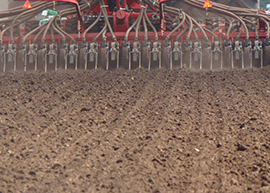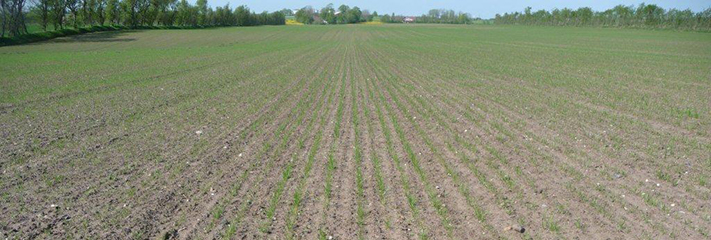For successful spring sowing, set the right conditions
Spring is by far the best time of year for sowing grass seed. To make the most of this season of growth you need to get the basics right. You have to set the conditions for successful germination and vigorous growth.
03/05/2018
Seedbed preparation and sowing
 Small seeds, such as grass and clover, really do benefit from a well-prepared seedbed. To do it well, you have to start the previous year. Autumn ploughing followed by spring harrowing creates excellent conditions for germination.
Small seeds, such as grass and clover, really do benefit from a well-prepared seedbed. To do it well, you have to start the previous year. Autumn ploughing followed by spring harrowing creates excellent conditions for germination.
Another factor is seed depth. To increase germination rates, sow grass and clover to a depth of one to two centimetres. Afterwards roll the ground to consolidate the seedbed and improve contact between seed and soil.
Read more about establishment.
Seed mixtures
Choose a seed mixture that suits the way you intend to manage your sward. For every management scheme (longer-term ley for grazing or cutting, short-term ley for silage), fodder type (silage, hay, grazing), and grazing animal (sheep, cattle, sheep and cattle, horses), there's an effective seed mixture. To find the mixture that'll work for you, talk to your local DLF representative.
Find a suitable seed mixture and management scheme (see table at the back of the catalogue).
Cover crops
Young seedlings grow better when protected by a faster-growing cover crop. But not all seed mixtures contain quick-growing components. Long-term mixtures used in central and eastern Europe, for example, have a larger share persistent species such as tall fescue, tall-fescue-type festulolium, timothy and even Kentucky bluegrass/smooth-stalked meadow-grass.

A separate cover crop can protect these young seedlings. Farmers have traditionally used spring cereals such as oats, wheat, and barley or legumes such as peas or beans as cover crops. The disadvantage of this approach is that the cover crop requires a separate sowing because the seed sizes and seed depths are different. It's a two-stage process to sow and establish the cover crop before you seed with grass.
Other option is to use westerwold ryegrass. Adding 5 kg/ha of westerwold ryegrass to a grass-seed mixture is an easier and cheaper way to introduce a cover crop. For mixtures including red clover, the added ryegrass also has a positive affect on grass yields in second and subsequent years. You do, however, have to cut the stand more often during the year of establishment to avoid flowering and seed production from the westerwold ryegrass.
Note that you should not use a cover crop if you establish your stand in late summer.
Read more about westerwold ryegrass 2n and westerwold ryegrass 4n varieties.
Can we help get your spring growth off to a good start?
If you're planning to sow grass seed this spring – and you think you could do with a little help – please get in touch. Your local DLF representative will be delighted to share their knowledge and insights.
